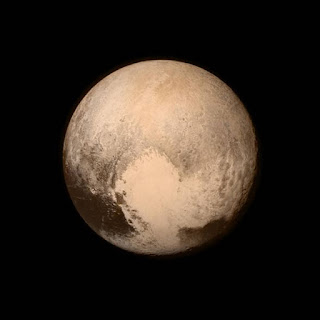This is a statue to honor the discoverer of Pluto, Clyde Tombaugh. He was only a young man when he joined the Lowell observatory staff. He had the right stuff to be able to concentrate on the task of looking for Planet X. Over a extended period of time he took images through a fine quality 13 inch Astrograph telescope. He would take pictures of the sky near the ecliptic each clear night. Later he would take images of the same area and then compare those images using a blinking compactor to see if anything had moved. Eventually he discovered a star that moved the correct amount to indicate it was a planet beyond the planet Neptune. This discovery was made on February 18, 1930
On the steps of the Saturn building you will see a sign that reads "PLUTO TOUR STARTS HERE". At the designated time a tour guide showed up took us inside of the Saturn building where displays show the history of Lowell Observatory
Here is the pathway that leads to the observatory where Clyde Tombaugh discovered Pluto. There are markers along the way that shows the comparative distance of each planet in the solar system.
Here is observatory at the end of walkway, which houses the observatory 13 inch Astrograph that was used to discover Pluto.
Here is the 13 inch Astrograph telescope used to discover Pluto. We were able to walk around it to look at it. The guide removed the back plate and allowed us to look through the tube where we could see the 13 inch lens at the top end of the telescope. He also allowed me to turn the scope a little on it's axis and look through the finder scope.
Here is the telescope from the other side, where you can see the sturdy mount that allowed the telescope to take beautiful long exposures of the sky.























































